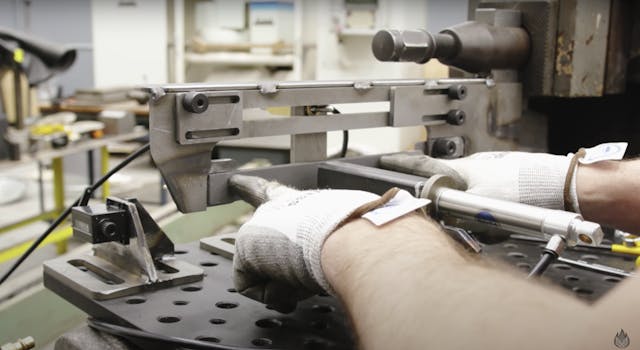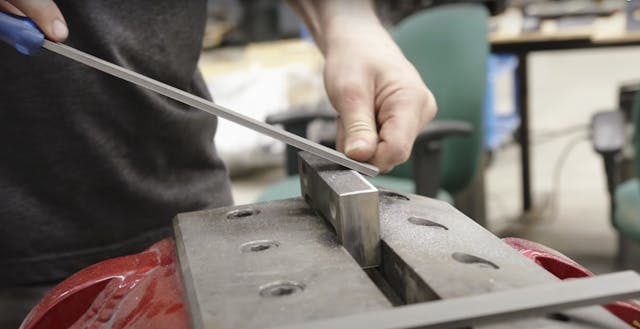Media | Articles
There is a 50 percent chance you’ve been filing wrong
Somewhere between fact and fiction live bits of knowledge passed down from mechanic to mechanic. One that I have always felt a little passionate about is the proper use of a file. There is a correct cutting stroke, and pulling back on the file only dulls the edge produced by it.
Well, I’m here to apologize. I was wrong when I declared that in multiple articles in the past. It was going to take a scientific experiment to convince me I was wrong, and that’s exactly what Fireball Tool accomplished in this video.
Now, let’s review the set-up here, because in my opinion this test was really well designed. Meaningful results would require a lot of filing, and there was no way a human could provide the necessary volume or consistency. Fireball Tool affixes a jig to a shaper that moves the file back and forth with controllable speed. An air switch cycles a small chunk of steel against the file as it completes its motions. Thus, the steel can be in contact with the file for both for and aft motions, or engaged only on the cutting stroke.

The files are high-quality Pherd, and the 2500-stroke test is conducted on three grades of files. After all the tests are run, Fireball Tool compares the files to each other and to new ones under heavy magnification. This is the part where my trust in supposedly time-proven knowledge proved misplaced. Comparing the files only used on the cutting stroke to the ones that back-filed shows no significant difference in wear. Even more interesting: Using the files on the back stroke removed a measurable amount of extra material from the steel chunk.
With that information, I had to sit and think for a minute. Where could this myth of wearing out files have stemmed from? I have no definitive information here, but I will likely still use the “lift” method of filing because it allows me to inspect the material between passes. It seems all too easy to remove too much material if you’re blindly putting file to workpiece, scraping back and forth, and checking only when you expect to see results. Perhaps folks see filing as similar to sharpening, in which you do only want to cut in one direction in order to achieve a proper wire edge. These two activities aren’t the same, though, so applying the same rules to both filing and sharpening must be a mistake. It’s a fallacy I believed and told others, though, so I’m far from innocent here.
Marketplace
Buy and sell classics with confidence
Does this information change your mind at all? Let us know in the comments below.



